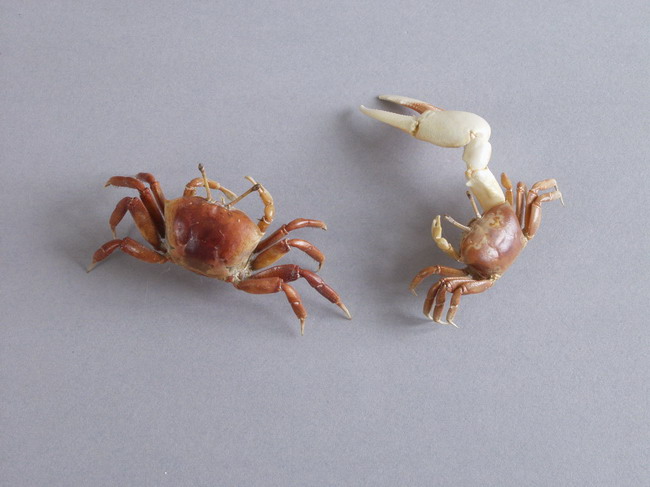Crustacean collection
Curator:
Alexander Alyakrinsky.
955 specimens. The core of the collection is about 400 crabs
collected during the expedition of the Institute of Oceanology of the USSR
Academy of Sciences to the islands of the Pacific Ocean in 1971. Later, the
collection was replenished by Alexander Alyakrinsky, who brought more than 100 crabs
from Malaysia, Thailand, the Sunda Islands, the Maluku Islands (Indonesia), and
the Philippine Islands, as well as occasional gatherings of other museum employees.
The jewel of the
collection is the giant Japanese spider crab (Macrocheira kaempheri), acquired
by the founder of the museum Alexander Kohts in 1919. The giant crab belongs to
the family of so-called spider crabs (Majidae), one of the largest families of true
crabs. This family also includes species of much smaller sizes, many of which
are part of the museum's collection. Some of them are known for their ability
to disguise. For example, they may attach various algae to the upper surface of
their carapace, which makes them almost invisible on the seabed.
Crabs of the
Dorippidae family, also widely represented in the Darwin Museum collection, use
other means of disguise. They hold above empty shells of bivalve mollusks themselves
with the help of two pairs of legs specially adapted for these purposes. While
swimming crabs of the Portunidae family act differently when facing danger. They
use their sharp claws, so very few predators would dare to attack them. Judging
by their name, swimming crabs are also notable for their ability to swim. The
museum’s collection contains more than 50 specimens of these crustaceans.
Fiddler crabs (genus
Uca) also have large claws, but only one and only the males. They are most well
known for their sexually dimorphic claws - the males’ major claw is much larger
than the minor claw while the females’ claws are both the same size. The
smaller claw is used to grab food - silt. The role of a large claw is to signal
that the territory is occupied or to lure a female. Each species of fiddler crabs
has its own "gesture language." The museum collection holds more than
40 specimens of fiddler crabs.
12 species of endemic
amphipods of Lake Baikal are also of great scientific value.

Fiddler crab (Uca vocans L.). Female on the left, male on the right.








